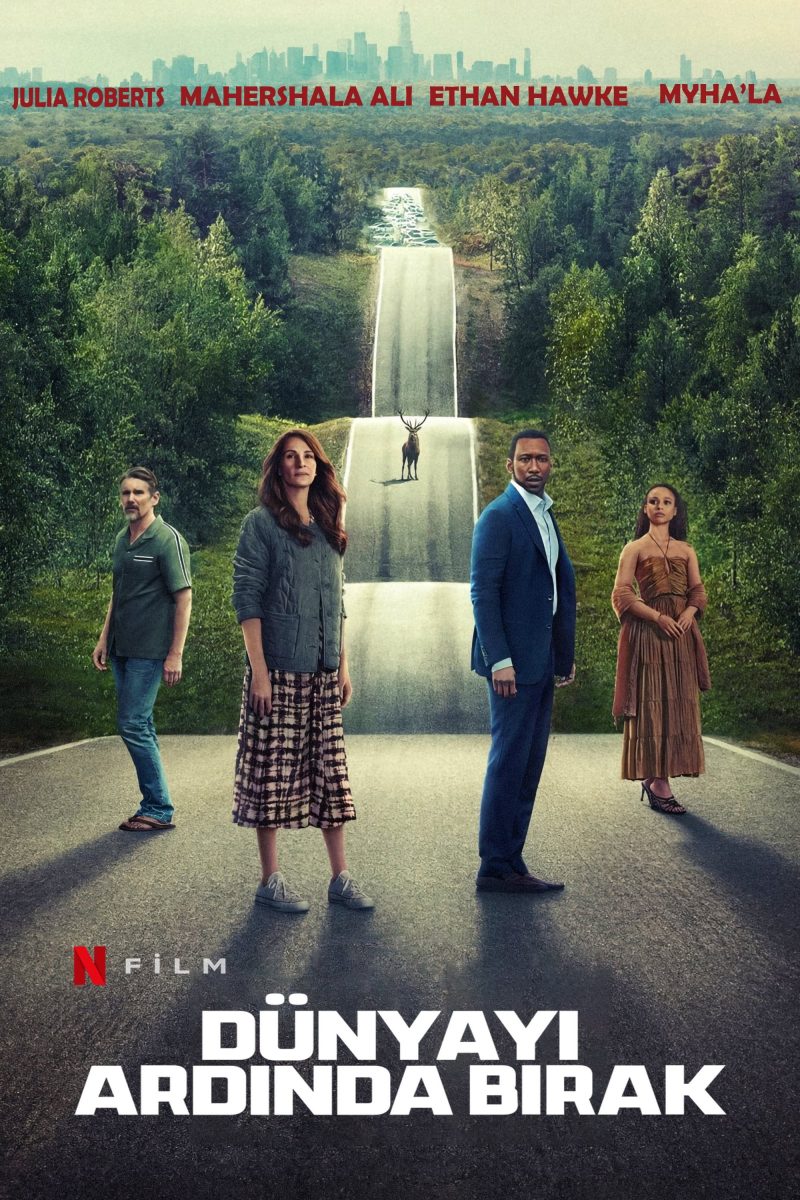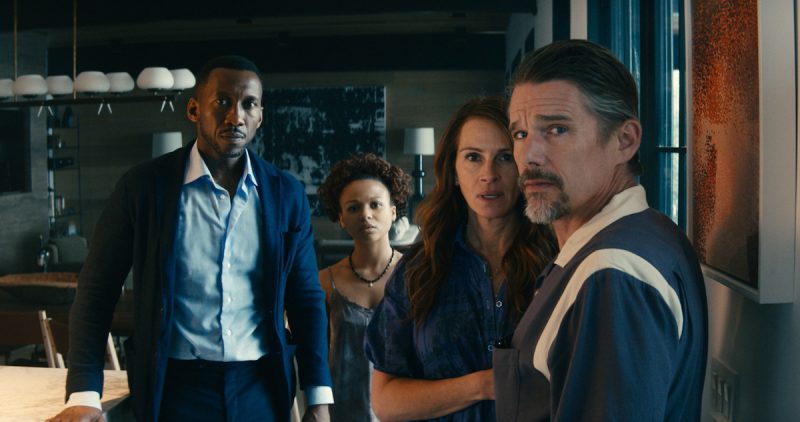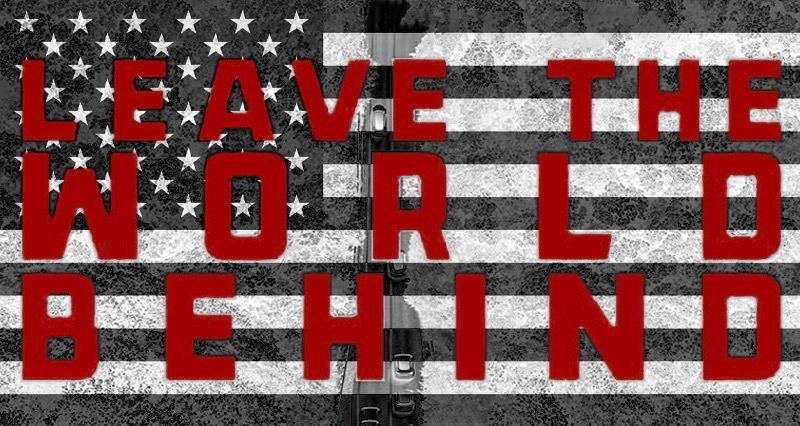By Tunca Arslan
Hollywood has been forming a separate genre by spreading fear about the future of our world with dystopian science fiction movies. Some popular ones also cover actual threats. Recent examples are the Netflix movie “Leave the World Behind”, produced among others by the Obama couple, and “Civil War” directed by Alex Garland.
It’s not surprising that dystopias, which reflect the fears of the present moment through stories about the future, go hand in hand with legitimacy crises and societal trust loss in the US, where the genre predominantly originates. A brief journey through the history of the US and cinema provides numerous examples. Unlike science fiction examples that create a certain sense of relief in the audience due to their distance from the contemporary world, pessimistic stories about the present directly depict a society in crisis. “Leave the World Behind” is a clear piece to ponder on the dissatisfaction, loss of trust, and uncertainty prevailing in contemporary American society. Moreover, there is no rescuer superhero in the end.
Imagine experiencing a cyberattack in your country, electricity and the internet being cut off, highways being closed, finding yourself and your family suddenly engulfed in a total uncertainty, the environment and nature becoming strange, smoke rising from the nearest city. And no one to help!
Whom can we trust while the world collapses?
Directed by Sam Esmail and featuring famous names such as Julia Roberts, Ethan Hawke, Mahershala Ali and Kevin Bacon, “Leave the World Behind” narrates the anxiety and uncertainty-filled adventure of the Sanford couple, who have two children and live in New York, as they head to a luxury villa they rented for a weekend outside the city. Amanda works in the advertising industry and her husband is a literature professor at a university.

The villa’s advertisement says, “The place where you leave the world behind.” Indeed, that’s what happens; peculiarities start soon, and the world begins to be “left behind”. First, a giant tanker runs aground on the beach of the region. Then, an airplane wreckage is found. Satellites go offline, electronic devices, phones stop working, and unusual behaviors begin in the deer and birds in the nearby forest. And the suspicious black father-daughter appearing at the door, claiming to be the real owners of the villa, say they had to come to the house because they couldn’t go to the city. The villa becomes a confined space like in catastrophe movies such as airplanes, ships, submarines, buses and subway cars. However, there are plenty of scenes where the camera and characters go outside the house.

The film, adapted from Rumaan Alam’s novel in 2020, stands out not only for its acting performances, visuals, and agile camera movements but also for its dialogues. The joint screenplay of Sam Esmail and Rumaan Alam, emphatically underscores the message of “don’t trust anyone while the world is collapsing.” It seems that Amanda Sandford never trusts Scott and his daughter Ruth, who claim to be the real owners of the villa, primarily because of their skin colors. Meanwhile, her husband, as a typical American liberal, is more like “avoiding prejudices”, and opening their “home” to these “strangers”. Similarly, Ruth, like Amanda, openly tells her father that they should never trust white people while she finds herself having to sleep in the basement of their own home. As a character in the film remarks, “When everything is in chaos and uncertainty, who can say we’re safe?”
What if 19 states revolt?
Another example depicting a smoky chaos reigning over American cities is “Civil War”. The US heads to a new presidential election, continuing to experience all the crises and mental divisions left over from the previous one. For instance, just recently, Texas and many other states have raised the flag of rebellion once again. Social anxieties and fears continue to be reflected in popular culture.
Alex Garland’s latest film, “Civil War,” known for its quality works such as “Ex Machina” (2014) and “Annihilation” (2018), offers a portrayal of the US where problems are sought to be resolved not by laws or superheroes but by outright conflict. The cracks in the internal order of the US promise a future where opposite sides are armed against each other, and Garland depicts this “shock of the future” in his film. Remember that films that almost accurately predicted the COVID-19 pandemic caused quite a stir. How is it that films like “Contagion,” for example, managed to present everything that would happen almost a decade ago? We’ve seen many examples where life imitates art. It’s possible to perceive “Civil War” as a kind of “harbinger”.

One last interview with the President
We are in the near future. Civil war is in full swing in the US. Texas and California join forces with 17 other states to form the “Western Forces against Washington. Stray armed militias are terrorizing, and bloodshed is rife.
The film tells the story of four journalists embarking on a journey from New York to Washington to conduct maybe one last interview with the President. Where survival depends on one’s color, origin and “what kind of American” one is, it’s a life-or-death journey. Garland strives not to make a conventional “action movie” but rather emphasizes the journalistic reflexes and professional efforts of the characters.
And there is no intrigue to be unraveled, no surprise to astonish both characters and audience; we watch only the portrayal of events. The conflict scenes, especially the entire finale, serve not to aestheticize violence but rather to give the sense of realism. And the fate of the President, representing the collapse of the system rather than being Trump or Biden, is quite telling, like the Capitol riot in January 2021.

A new chapter in Hollywood
Alex Garland in “Civil War” does not repeat the occasional criticisms of decay and corruption typical of the liberal-Democrat wing of Hollywood. Instead, this is a film that directly portrays collapse, conflict and trauma in American society. The gala of the film in Texas, with much more heated applause and cheering compared to other places, is also a signal.
Hollywood has produced numerous stories about the American Civil War of 1861-1865, and has glorified American involvement in wars in other countries thereafter. The film “Civil War” was made during a time when Americans’ feelings of distrust and pessimism about their country are at their peak. It’s possible to say that a new chapter has been opened. A survey in 2022 showed that 47.8% of Americans expected an internal conflict within a few years, and 50.1% considered it a significant possibility. Alex Garland has made the film of this expectation, in a sense. History will show whether these two films reflect American paranoia or possible realities. We aren’t talking about a distant future.
Classic catastrophe films follow a narrative where stability transitions to chaos. Then comes a series of trials to determine a leader/savior, and eventually the escape from catastrophe. In the films I mentioned, there is neither a leader nor a savior, nor a promise of stability. The American people are now entirely on their own, with no one to rely on.

















Leave a Reply